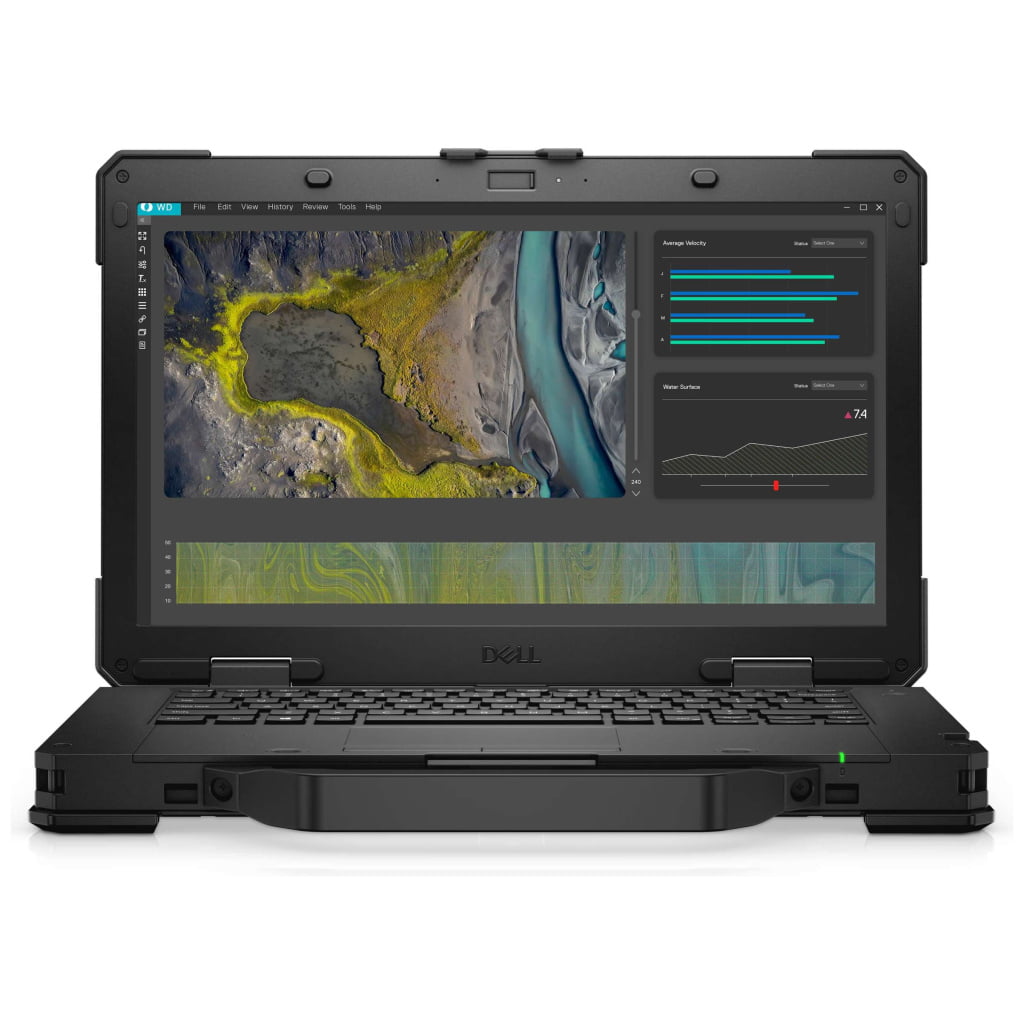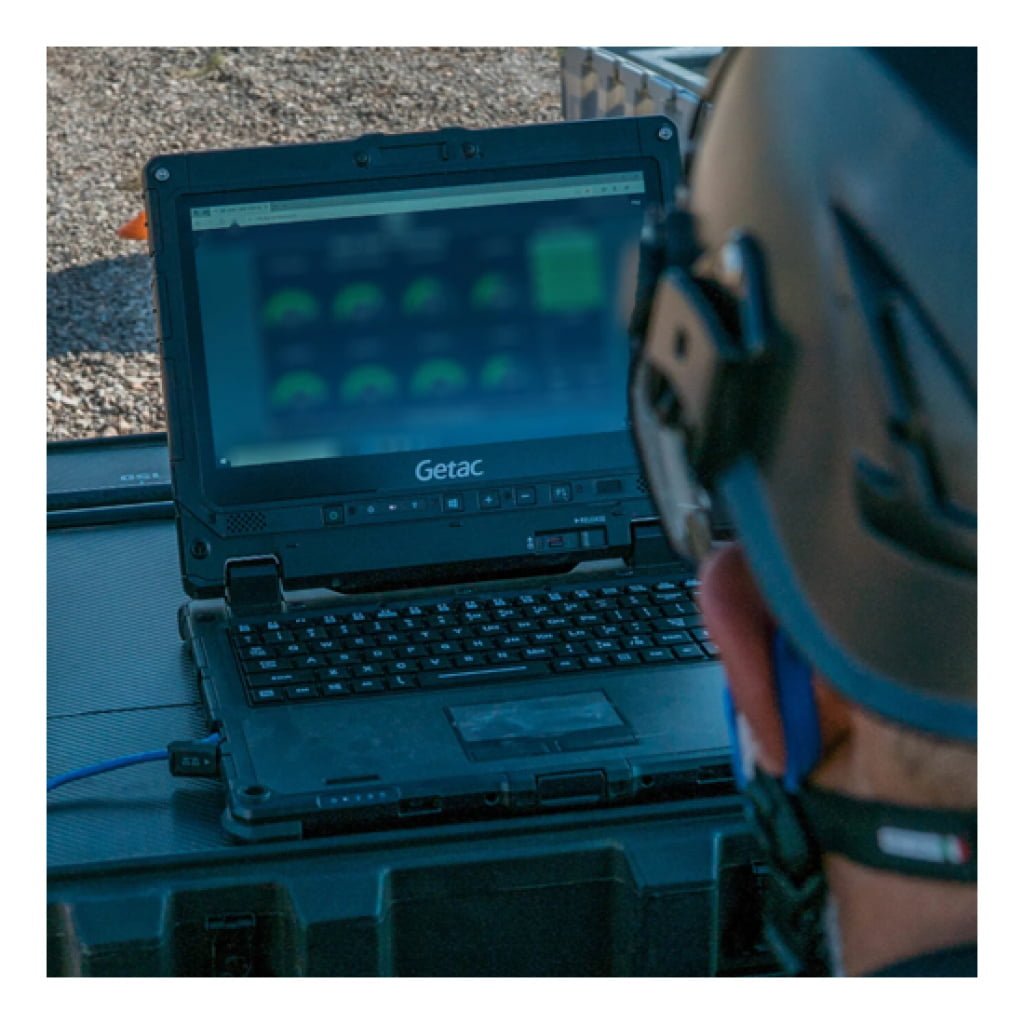Introduction to Rugged Technology in Military Use
In the high-stakes world of military operations, the demand for robust and reliable equipment is paramount. Rugged technology includes laptops, tablets, and other devices engineered to withstand the toughest conditions. Unlike standard consumer electronics, rugged devices are typically designed according to military specifications, known as MIL-STD, which sets the standards for durability and performance in harsh environments.
Military operations often involve exposure to extreme temperatures, moisture, dust, and shock — all of which can severely damage typical commercial technology. Rugged devices, however, are built with reinforced frames, shock-mounted hard drives, and screens that can be read in direct sunlight. Their sealed ports prevent ingress of contaminants, and their ability to operate effectively from deserts to the Arctic ensures operational readiness across various terrains.
Rugged technology’s key features generally include:
- Enhanced durability and resistance to drops, vibration, and pressure
- Operability in extreme temperatures, both hot and cold
- Protection against water, dust, and other potential contaminants
- Longer battery life for extended field operations
- Display screens that are legible in a vast range of lighting conditions
These devices often carry certifications like IP ratings, which define levels of sealing effectiveness against intrusions such as dust and water. Additionally, they might be certified to pass the electromagnetic interference standards, ensuring the proper functioning of the equipment despite radio-frequency interference, which is common in combat scenarios.
Rugged technology is designed not just to survive, but to guarantee optimal functionality in the diverse and unpredictable theaters of military engagement. The successful integration of these devices into military operations greatly contributes to the strength, agility, and tactical efficiency of military forces, ensuring that personnel remains connected and mission-ready, regardless of external conditions.

Durability Under Extreme Conditions
In the rigorous environs of military operations, traditional computing devices falter, but rugged laptops and tablets are engineered to prevail. The military sector demands equipment that can withstand a plethora of extreme conditions, extending far beyond the capabilities of standard consumer electronics.
Military-grade rugged laptops and tablets come encased in strong, often reinforced, materials. These can typically endure:
- High and low temperature extremes, ensuring functionality in scorching deserts or freezing arctic conditions.
- Shock and vibration resistance, crucial when traveling over rough terrains or during accidental drops.
- Water and dust resistance, as per IP (Ingress Protection) ratings, safeguarding the devices against fine particulates and various forms of moisture, including torrential rains.
Furthermore, rugged military devices are designed with:
- Sunlight-readable displays, enabling clear visibility in bright outdoor environments.
- Long battery life and hot-swappable batteries, for uninterrupted operations during lengthy missions.
- Tamper-resistant features, which protect against unauthorized access and cyber threats in the field.
These devices often exceed the MIL-STD-810G military standards, a benchmark for measuring environmental ruggedness and operational durability. Such standards cover a multitude of scenarios, including exposure to rapid temperature change, high altitude, and corrosive environments.
Through rigorous testing and certification processes, rugged laptops and tablets are tailored to maintain optimal performance. Their resilience ensures that military personnel can rely on their equipment in diverse and unpredictable situations, thereby enhancing tactical efficiency where traditional devices would succumb to the elements.
Enhanced Security Features for Sensitive Operations
Military operations often involve handling classified or sensitive information that necessitates robust security features. Rugged laptops and tablets designed for military use are equipped with a suite of enhanced security capabilities to ensure the confidentiality, integrity, and availability of critical data. Here are some key security features present in these devices:
- Biometric Access: To ensure that only authorized personnel can access the device, rugged laptops and tablets may be equipped with biometric security measures such as fingerprint scanners or facial recognition technology.
- Hardware Encryption: Military-grade devices frequently incorporate hardware-based encryption solutions. These are dedicated cryptographic processors that secure data at the hardware level, greatly reducing the risk of tampering or unauthorized access.
- Trusted Platform Module (TPM): A TPM is a secure crypto-processor designed to carry out cryptographic operations. It includes multiple physical security mechanisms to make it tamper-resistant, and military computers with TPM can secure the information processed by the device against unauthorized access.
- Secure Boot: Secure boot is a feature that prevents malware from loading when a device starts up. It works by ensuring that only trusted software with the correct signature is allowed to boot, safeguarding the system from potential threats.
- Kensington Lock Slot: Physical security is also crucial, and a Kensington lock slot allows the device to be physically secured to prevent theft or tampering when not in use.
- Smart Card Readers: Common in military computing, smart card readers control access to the equipment and its data, reinforcing security with a physical token that must be presented for user authentication.
- Software Security Suites: Rugged laptops and tablets often come with pre-installed security software specially optimized for military use. These suites include antivirus, anti-spyware, firewall, and other security tools tailored for operational environments.
These enhanced security features are essential for maintaining operational integrity and protecting sensitive military data. By integrating cutting-edge security technologies into their rugged devices, military personnel can execute their missions with the confidence that their equipment is safeguarding vital information against an array of cyber and physical threats.
Compatibility with Military-Grade Equipment
In the demanding environments where military operations take place, the synergy between devices is crucial for mission success. Rugged laptops and tablets are specifically designed to be compatible with a wide array of military-grade equipment, ensuring seamless integration and communication.
Interfacing with Communication Systems
- Rugged devices easily connect to secure military communication systems, including radios and satellite communication devices.
- They often include I/O ports that are compatible with legacy and modern military equipment, ensuring uninterrupted data exchange.
Mounting and Mobility Solutions
- Engineered for use with standard mounting systems found in military vehicles, aircraft, and even on soldier’s gear.
- The ability to integrate into existing frameworks allows for quick deployment and mobility in various operational contexts.
Power Supply Compatibility
- Rugged laptops and tablets work with military-specific power supplies, including standard-issue batteries and vehicle power systems.
- They can sustain operations through fluctuating power conditions that are typical in field environments.
Sensor and Peripheral Integration
- The incorporation of smart card and CAC readers provides for secure access control and data protection—essential in tactical operations.
- They are also compatible with night-vision, thermal imaging equipment, and various sensors that form part of military operation ecosystems.
Durability Meeting Military Standards
- Construction adheres to rigorous military standards like MIL-STD-810G/H and MIL-STD-461F, assuring device performance under extreme conditions and compatibility with other gear that must meet these standards.
- Their ruggedness ensures that they can withstand the drops, shocks, and vibrations associated with military equipment and vehicles.
Rugged laptops and tablets bridge technology with tactical demands, resulting in devices that not only withstand the harsh conditions of military use but also complement and enhance the broader array of military-grade equipment in the field. Their tailored design for interoperability increases the overall efficiency and effectiveness of military operations.

Resistance to Vibration and Shock in Combat Scenarios
In the harsh environment of military operations, equipment must withstand extreme conditions. One critical characteristic of rugged laptops and tablets is their resistance to vibration and shock, which are common in combat scenarios. These devices are engineered to endure the rigors of transport in military vehicles over rough terrain and to absorb the impact from drops and collisions that occur during the haste of a mission.
Military-grade devices follow stringent military standards like MIL-STD-810, which outlines tests for vibration, shock, and other environmental stressors to ensure functionality after exposure to such conditions. These tests include:
- Repeated drops: Devices are subjected to multiple drops from a specified height onto a hard surface to simulate real-world accidents.
- Vibration resistance: Equipment must operate effectively during and after being subjected to varying levels of vibration that replicate vehicle or aircraft movements.
- Shock absorption: Abrupt jolts and impacts are replicated to test the device’s internal and external robustness.
The design of rugged military laptops and tablets often incorporates features such as:
- Reinforced exteriors with shock-absorbent materials like rubberized edges.
- Solid-state drives (SSDs) with no moving parts, unlike traditional hard drives, making them less susceptible to damage from physical shocks.
- Internal components mounted with shock-dampening technology.
These attributes not only ensure that the device remains operational after a sudden impact but also help protect the critical data stored within, which is vital in a combat scenario where data integrity can be the difference between a mission’s success and failure. Thus, in the unpredictable and high-stakes theater of war, the resistance to vibration and shock inherent in rugged laptops and tablets is not just a feature—it is a necessity for tactical efficiency and operational readiness.
Extended Battery Life for Longer Missions
In the landscape of military operations, the endurance of electronic devices is critical. Rugged laptops and tablets designed for military use incorporate extended battery life to support longer missions where charging facilities are scarce. The integration of high-capacity batteries ensures that personnel can complete tasks over extended periods without the need for frequent recharging.
- Enhanced battery technologies such as Lithium-ion provide efficient power management. This enables the devices to operate for longer durations, often ranging from 12 to 20 hours on a single charge, depending on usage patterns.
- Hot-swap capabilities allow users to replace batteries without shutting down the device, thus maintaining operational continuity.
- Power-conservation features are embedded within the software and hardware of these devices. Display brightness, processor scaling, and energy-efficient components contribute to the extended battery lifespan.
- Auxiliary power options, including solar charging panels, are available as add-ons to sustain power in remote locations.
Military operations benefit from this prolonged battery life as it offers increased reliability and autonomy in the field. Missiles, drones, and other critical operations rely on these devices for mission planning and execution, and extended battery life means that soldiers are not left vulnerable due to power shortages. These rugged laptops and tablets enable military personnel to remain agile and responsive, significantly enhancing tactical efficiency across a multitude of scenarios.
Ease of Use in Hostile Environments
Rugged laptops and tablets are designed to withstand the unpredictability of military operations, especially in hostile environments. Militaries demand devices that function seamlessly despite adverse conditions, and ease of use is paramount for tactical efficiency on the battlefield.
- Durability: Enhanced with robust casings, these devices can resist shocks, drops, and vibration, ensuring they remain operational after physical impact.
- Weather Resistance: With the ability to withstand extreme temperatures, rain, dust, and sand, soldiers can confidently utilize technology whether in a desert storm or arctic freeze.
- Readability: Display technology in these rugged devices is adapted for outdoor readability, with anti-glare screens and adjustable brightness for clear visibility under direct sunlight or in low-light conditions.
- Long Battery Life: Extended battery life is crucial. Rugged laptops and tablets offer long-lasting power supplies, plus hot-swappable batteries to maintain continuous operation without downtime for charging.
- Intuitive Interfaces: Interfaces on rugged devices are designed to be user-friendly, with touchscreen capabilities that can be used with gloves, and oversized buttons for quick navigation, even under stressful conditions.
These features ensure that military personnel do not need to fiddle with their devices during critical moments. Instead, they can stay focused on the mission, secure in the knowledge that their equipment will respond reliably. Rugged laptops and tablets allow for uninterrupted strategic coordination and communication, which is indispensable for mission success in challenging environments, exemplifying the importance of usability married to resilience.

Customization Options for Specific Military Needs
In the military sector, mission success often hinges on the ability to rapidly adapt to changing scenarios. Recognizing this, manufacturers of rugged laptops and tablets offer a range of customization options to address specific military needs.
- Modular Design: Modular components, such as add-on modules for advanced GPS capabilities or RF communications, allow for tailored configurations that can support a variety of missions.
- Security Enhancements: With the nature of military operations, security is paramount. Devices can be customized with biometric sensors, smart card readers, and encrypted solid-state drives to safeguard sensitive information.
- Display Adaptability: High-brightness screens with night-vision compatibility ensure that displays are legible in direct sunlight or complete darkness, an essential feature for operatives in the field.
- Environmental Hardening: Customizable ruggedness levels enable devices to withstand extreme temperatures, high altitude, or exposure to water and dust, aligning with mission-specific environmental challenges.
- Extended Power Options: Power solutions like hot-swappable batteries provide uninterrupted device operation, crucial for extended missions without access to charging facilities.
- Communication Flexibility: Tailored wireless connectivity options, including satellite, 4G LTE, and Wi-Fi, ensure continuous communication and data exchange in remote or contested environments.
- Peripheral Compatibility: Integration with military-grade peripherals, such as secure USB devices or specialized input equipment, extends the functionality to meet diverse operative needs.
These customization options ensure that rugged laptops and tablets can be modified to enhance tactical efficiency, providing the military with technology that adapts to the dynamic nature of their operations.
Cost-Effectiveness Over Conventional Devices
In the military sector, where operations can extend to some of the most challenging environments on earth, traditional computing devices falter, leading to frequent replacements or repairs. Rugged laptops and tablets, engineered to withstand extreme conditions, present a more cost-effective solution over the long term. The initial investment in rugged computers might be higher, but their durability reduces the total cost of ownership (TCO) in several key ways:
- Lower Failure Rates: Rugged devices are specifically constructed to handle drops, vibration, dust, and moisture, significantly reducing the likelihood of malfunctions and the associated costs of downtime and repairs.
- Long Lifespan: With industrial-grade materials and components, rugged laptops and tablets last considerably longer than conventional devices, delaying the need for replacements.
- Extended Warranties and Support: Manufacturers often provide longer warranties and more comprehensive support plans for rugged devices, which can translate to savings in maintenance and technical assistance.
- Reduction in Ancillary Costs: Military operations necessitate a constant flow of information. Rugged devices minimize the risk of data loss or communication interruptions due to hardware failure, avoiding mission-compromising situations that can have costly consequences.
- Energy Efficiency: Many rugged devices are designed to be energy-efficient with longer battery lives, reducing the frequency of charges needed and saving on power resources in the field.
The integration of rugged laptops and tablets into military equipment arsenals promotes an efficiency that eventually balances the scales of their higher upfront costs. Ultimately, the practicality and longevity of rugged devices embody a smart investment for military applications, ensuring operational readiness and fiscal prudence.
Case Studies: Rugged Devices in Action
In modern military operations, rugged laptops and tablets have become invaluable assets, evidenced by numerous case studies that highlight their contribution to tactical efficiency. Here are a few such instances:
- Operation Arctic Edge: In the harsh and unpredictable conditions of the Arctic, the US military deployed rugged devices for communication and navigation during training exercises. The sub-zero temperatures and icy terrain did not impede the functionality of these devices, ensuring that soldiers maintained strategic coordination throughout the operation.
- Humanitarian Missions in the Philippines: After a devastating typhoon, the armed forces were dispatched for disaster relief. Rugged tablets were used for real-time data collection, mapping, and tracking supply distribution. Despite the high humidity and exposure to water, the devices functioned flawlessly, thereby facilitating efficient resource allocation to affected regions.
- Special Operations in Desert Environments: In scorching desert climates, where sand and heat can disable standard tech, special ops teams have relied on rugged laptops for mission planning and communication. The devices have proven to withstand the abrasive sand particles and extreme temperatures, ensuring that critical missions were completed without technological hindrance.
- Naval Operations: Aboard ships and submarines, rugged devices have to withstand not only the saltwater environment but also constant vibrations and the risk of impact. In several naval exercises, rugged laptops have been pivotal in navigation and managing complex systems, demonstrating resilience to the challenging maritime conditions.
These cases exemplify the versatility and reliability of rugged technology in diverse and demanding military scenarios. They affirm that the investment in ruggedized devices is justified, as they enhance tactical efficiency and enable the military to operate effectively across a spectrum of challenging environments.
Conclusion: The Strategic Advantage of Rugged Devices
Rugged laptops and tablets afford military operations a strategic advantage unparalleled by conventional devices. In the demanding and often hostile environments of military engagements, technology must withstand a barrage of physical challenges. The durability of rugged devices ensures continuous operation despite drops, vibrations, extreme temperatures, dust, and water exposure. This reliability under pressure is not merely a convenience but a critical component that could mean the difference between mission success and failure.
The inherent design of these rugged units allows for enhanced tactical efficiency. Soldiers can focus on their immediate tasks without the distraction or delay caused by equipment failure. Moreover, the long-term durability translates to a lower total cost of ownership, as rugged devices require fewer repairs and replacements over their lifecycle compared to standard technology.
Rugged devices also come equipped with advanced security features tailored for defense operations, protecting against data breaches and unauthorized access. In an age where cybersecurity is as vital as physical robustness, this aspect cannot be overstated.
- Rugged devices provide an edge in:
- Operational reliability in extreme conditions
- Focused efficiency and reduced risk of mission-compromising failures
- Economical longevity and reduced need for frequent replacements
- Enhanced security features against growing cyber threats
In conclusion, the integration of rugged laptops and tablets into military tactics is not merely a trend but a transformative shift. It promotes operational continuity, secures a technological advantage on the battlefield, and ensures that the military forces can rely on their equipment when it matters most, thereby significantly impacting the outcome of operations and maintaining national security.
FAQ
What are the primary benefits of rugged laptops and tablets in military operations?
Durability: Designed to withstand harsh environments including extreme temperatures, moisture, and rough handling.
Reliability: High reliability ensures operational effectiveness with less downtime due to equipment failure.
Security: Advanced security features protect sensitive military data against cyber threats
How do rugged devices improve tactical efficiency?
Data Access: Provide rapid access to critical information in the field.
Communication: Enhance real-time communication and coordination among military personnel.
Navigation: Equipped with GPS and mapping tools to aid in tactical maneuvers.
What types of connectivity options are available in rugged devices for military use?
Rugged devices for military use typically include options such as Wi-Fi, cellular (including SATCOM for remote areas), GPS, and NFC/RFID for secure, versatile field communication.
Are rugged laptops and tablets cost-effective for military budgets?
While the initial investment may be higher than commercial devices, rugged laptops and tablets offer long-term cost savings due to their durability, extended lifecycle, and reduced need for replacements.

Ulrik Maxen: Specialist in rugged computers and mobile scanners
Ulrik is an industry veteran with over two decades of expertise working with rugged computers and mobile barcode scanners. Brands include Panasonic, DELL, Getac, Zebra, and Honeywell/Intermec. He is known for his commitment to delivering products and solutions that increase operational efficiency. Dedicated to following new market trends and client satisfaction, Ulrik is a trusted advisor where rugged computers and mobile barcode scanners must be deployed.





